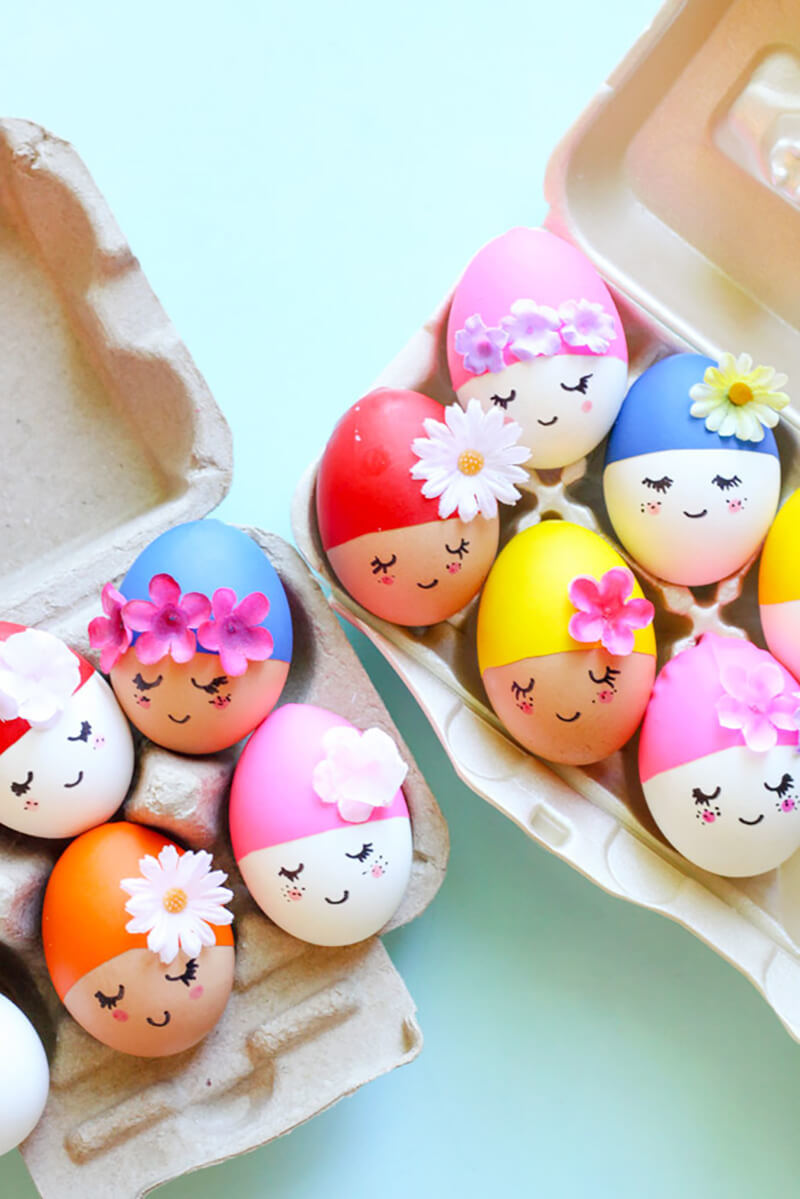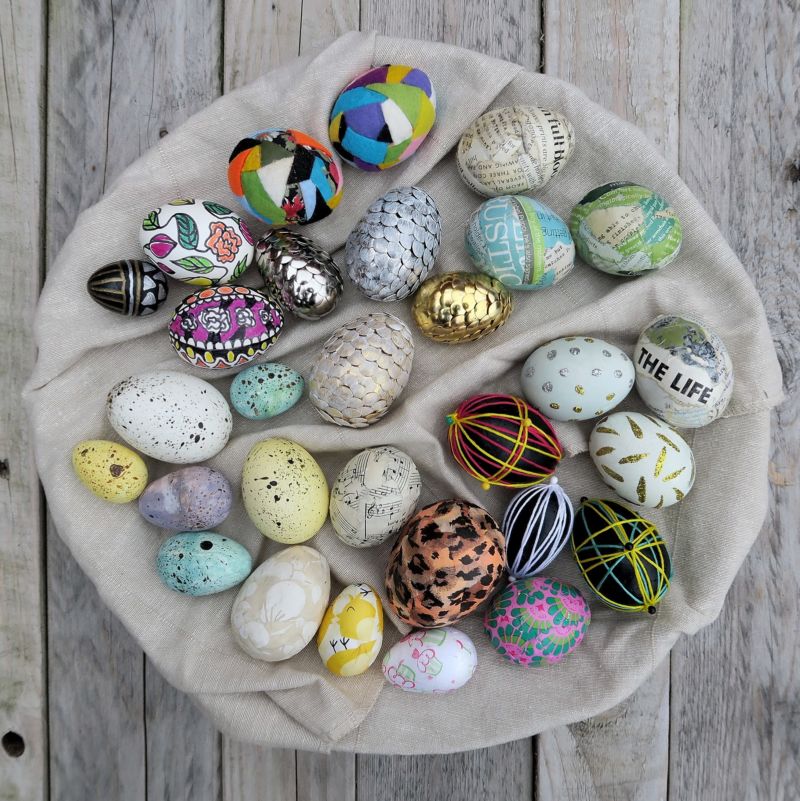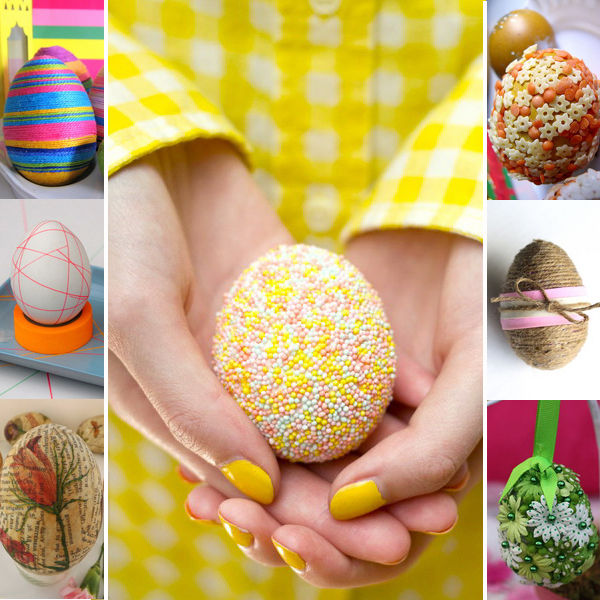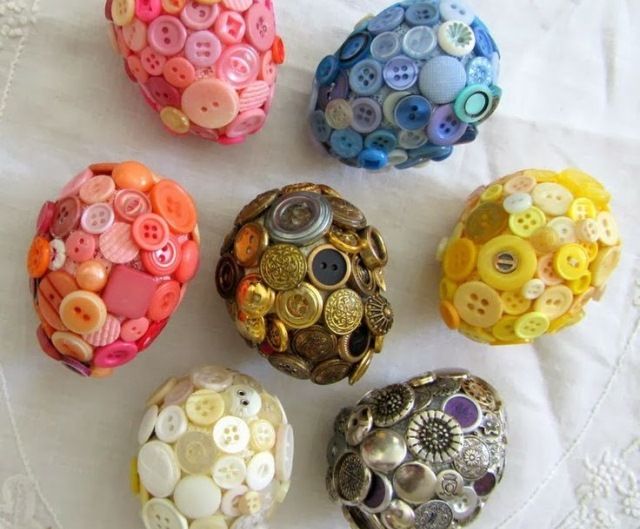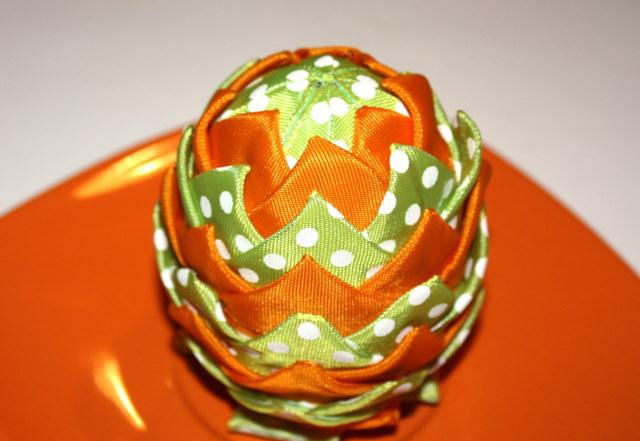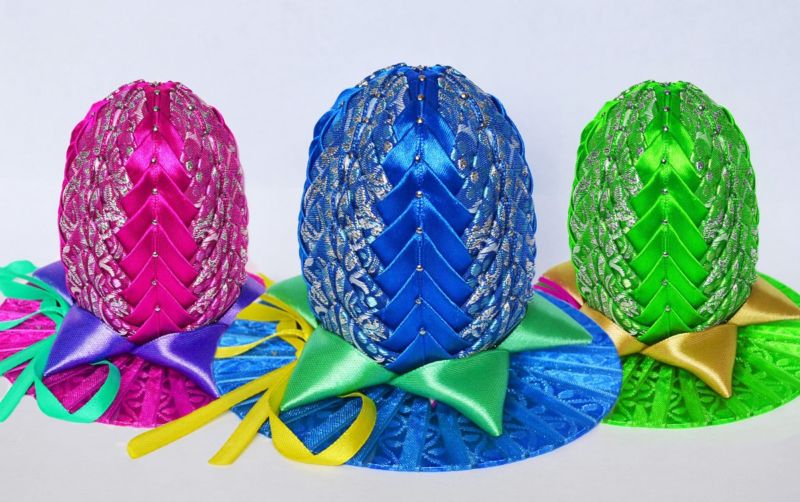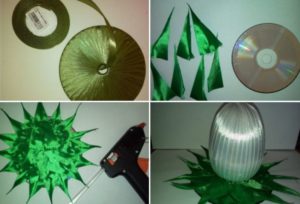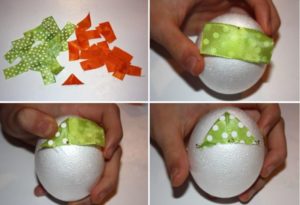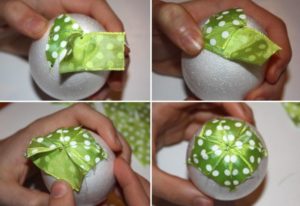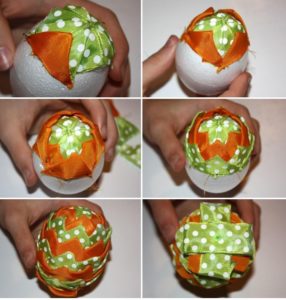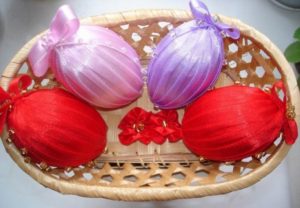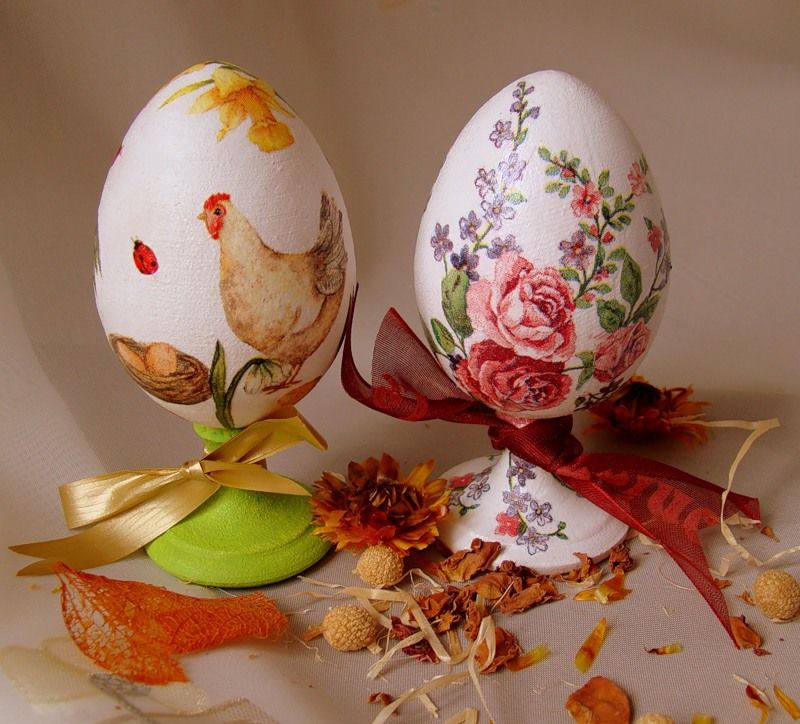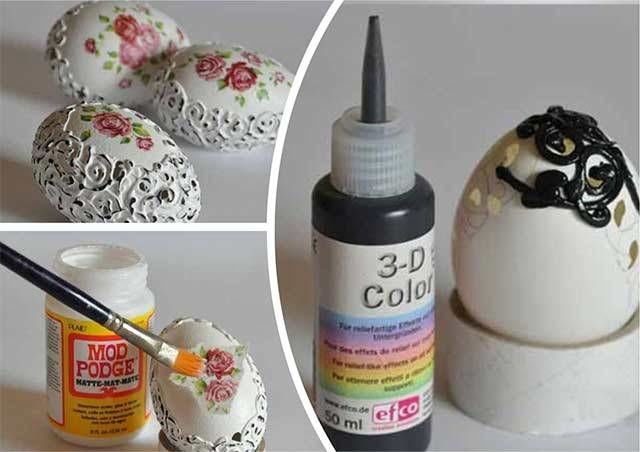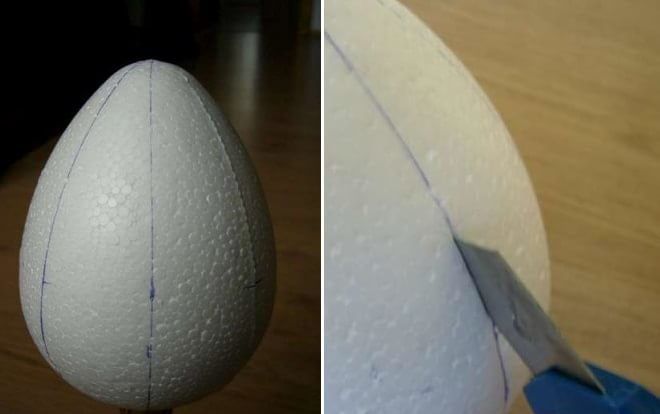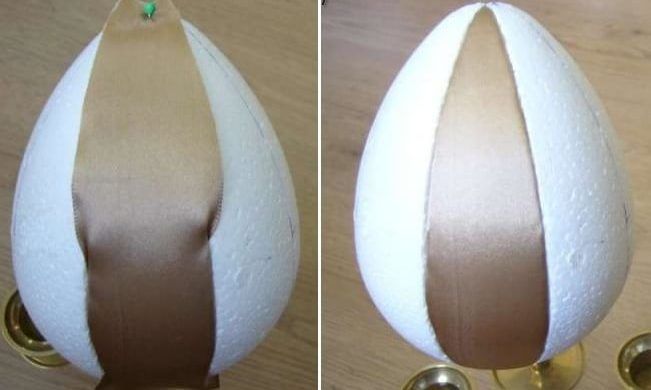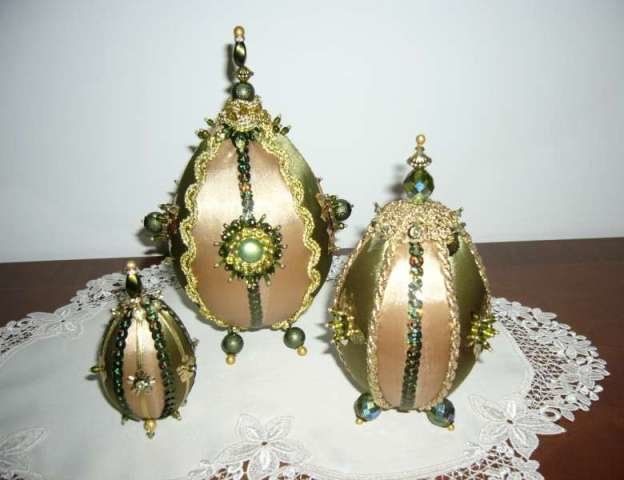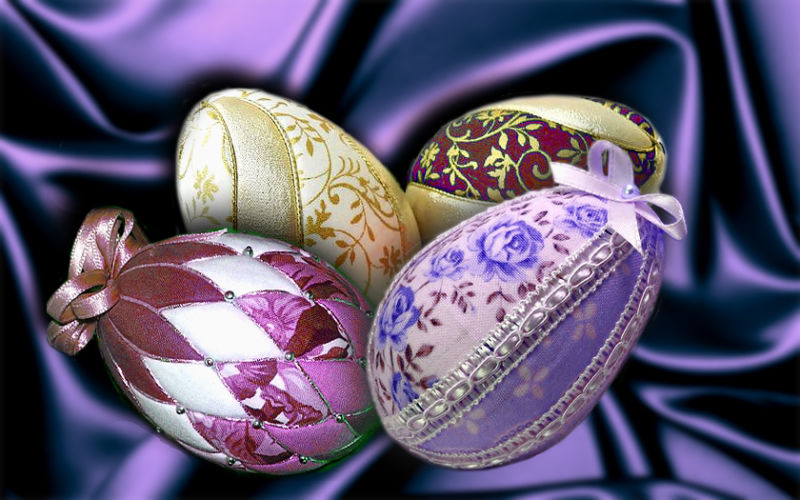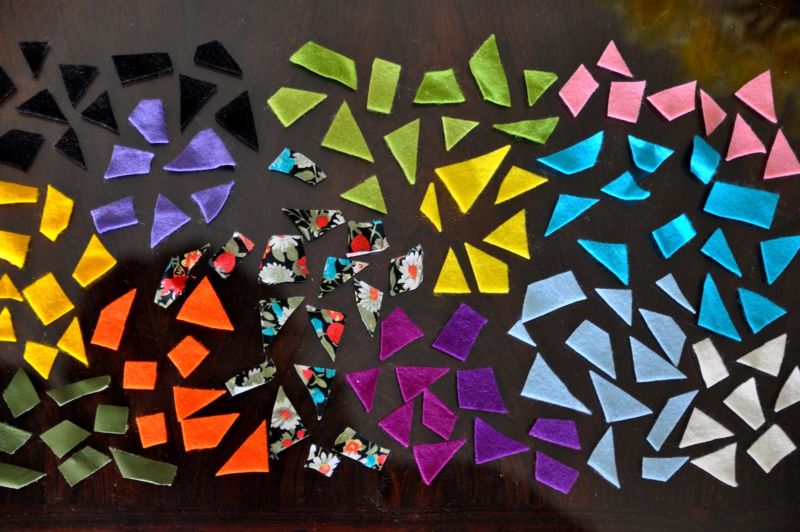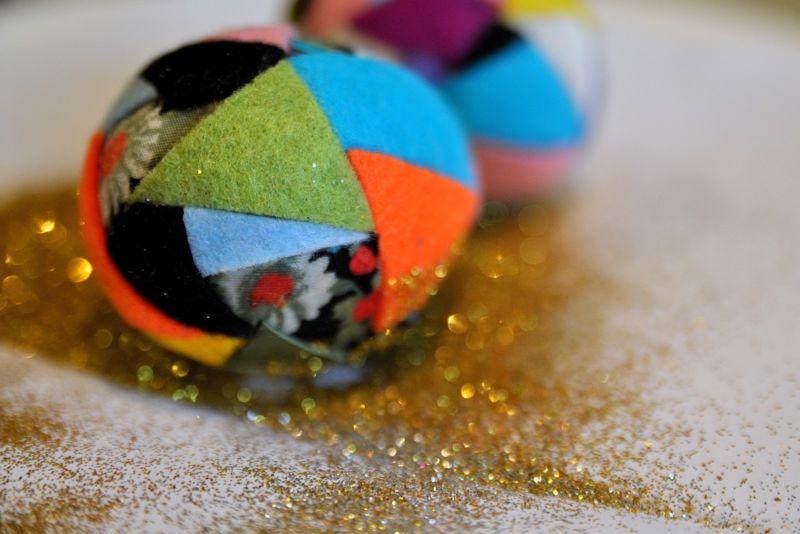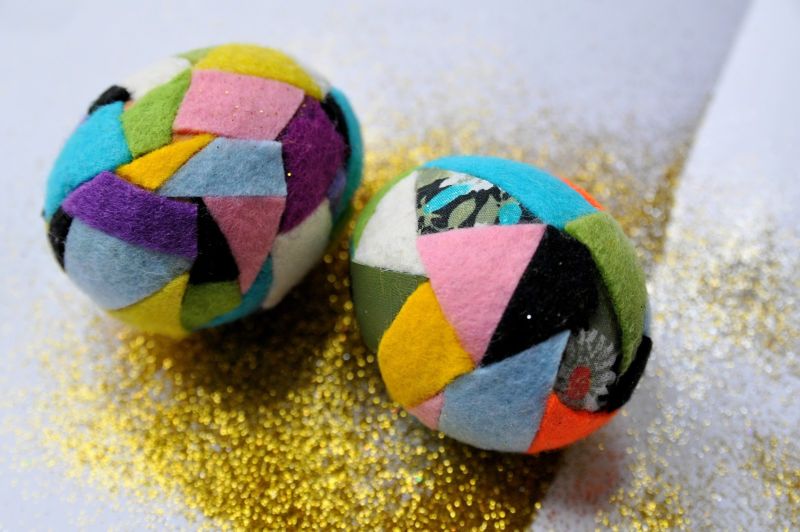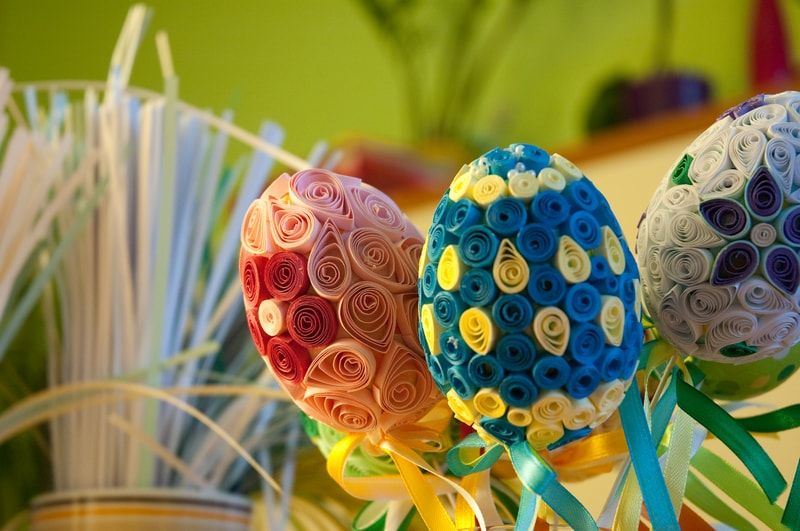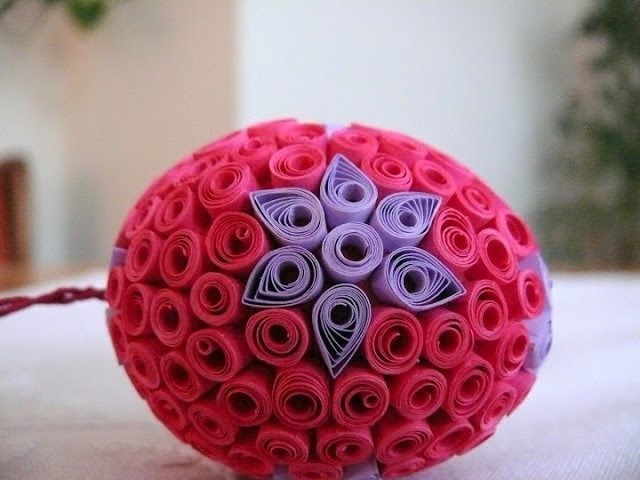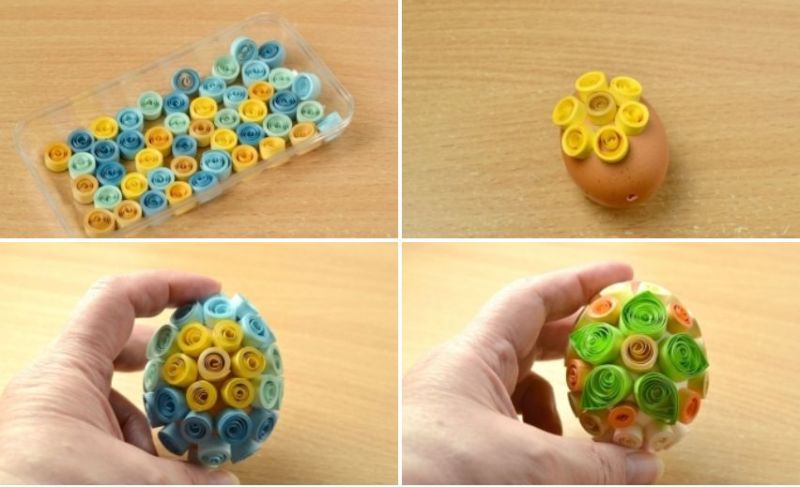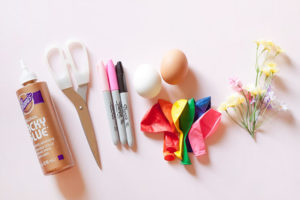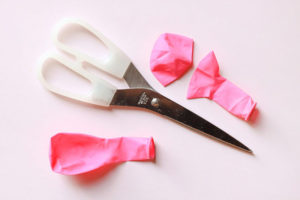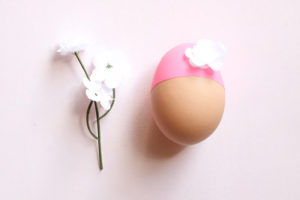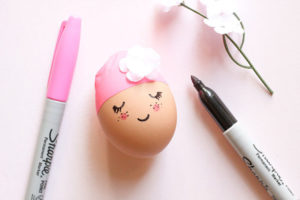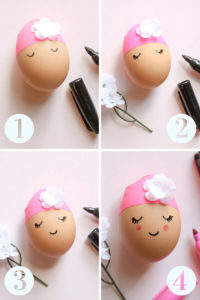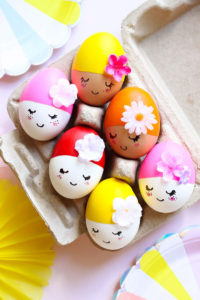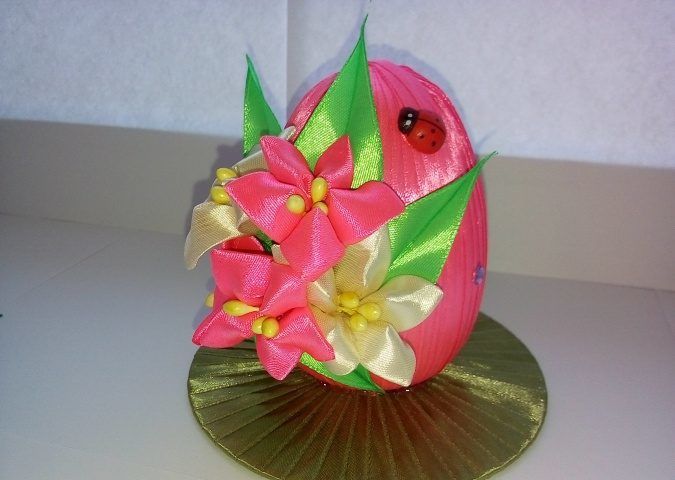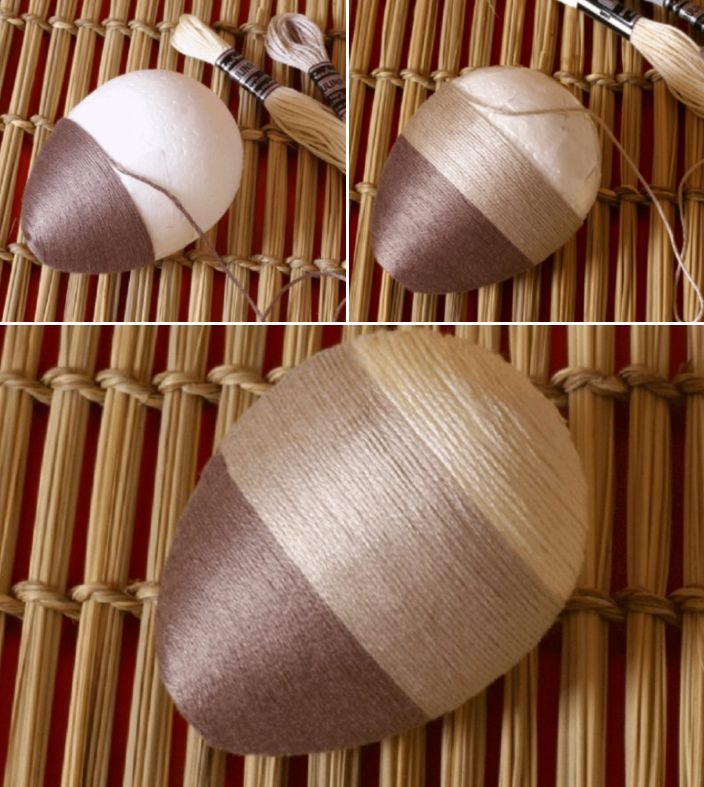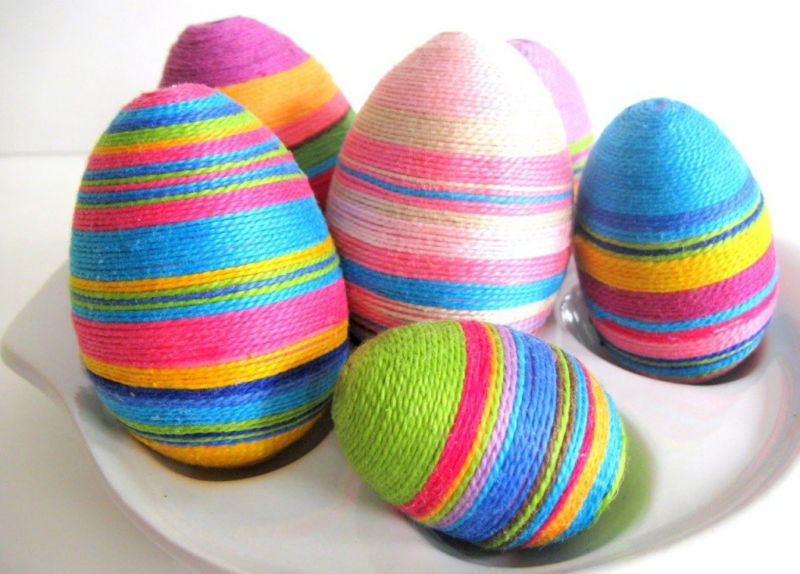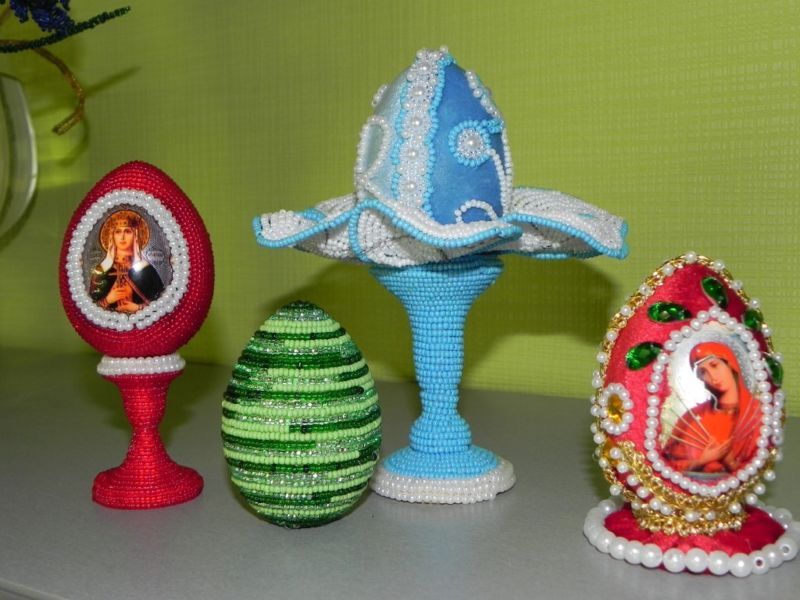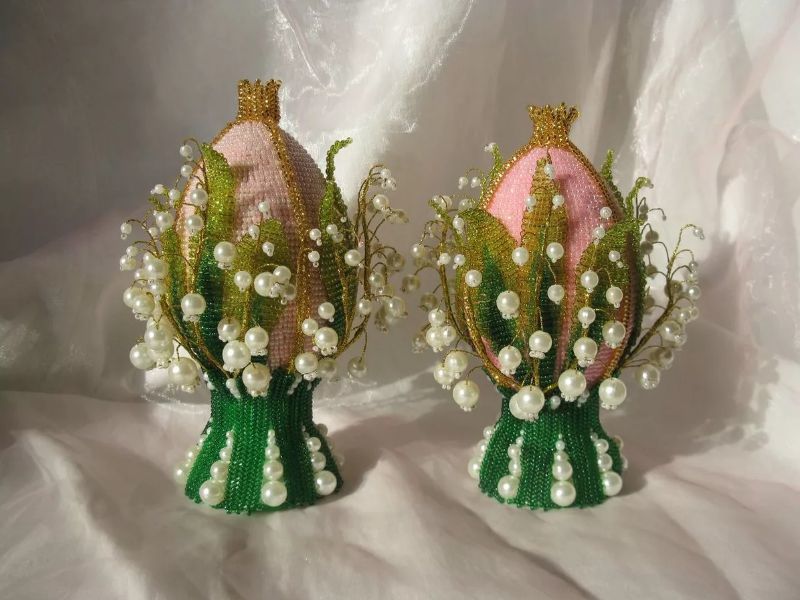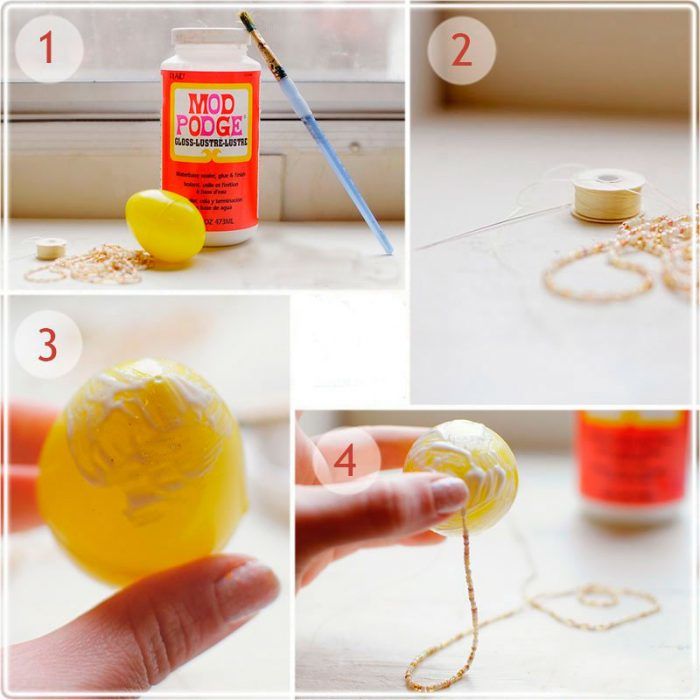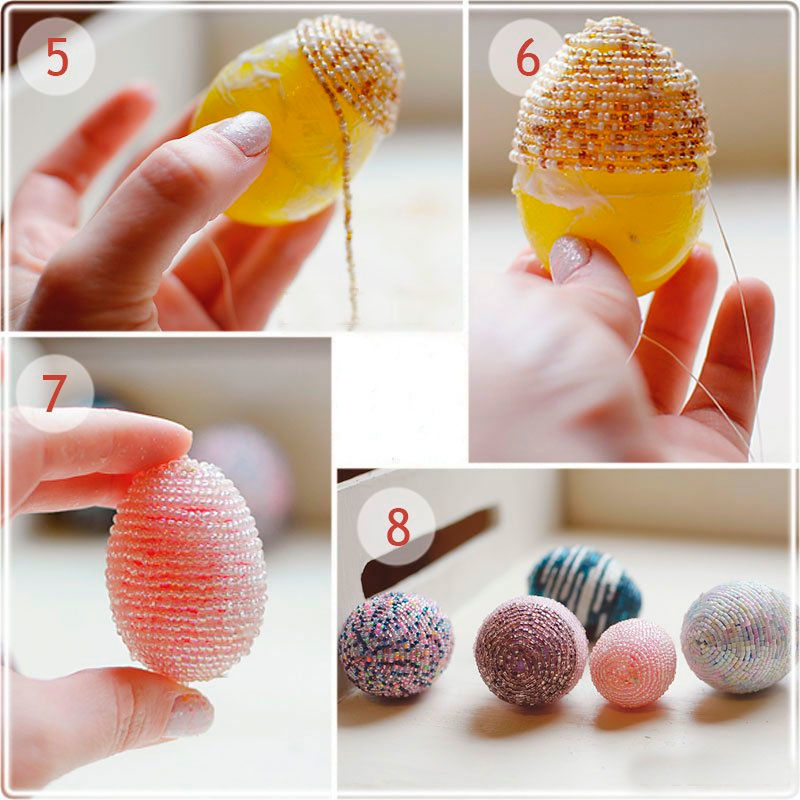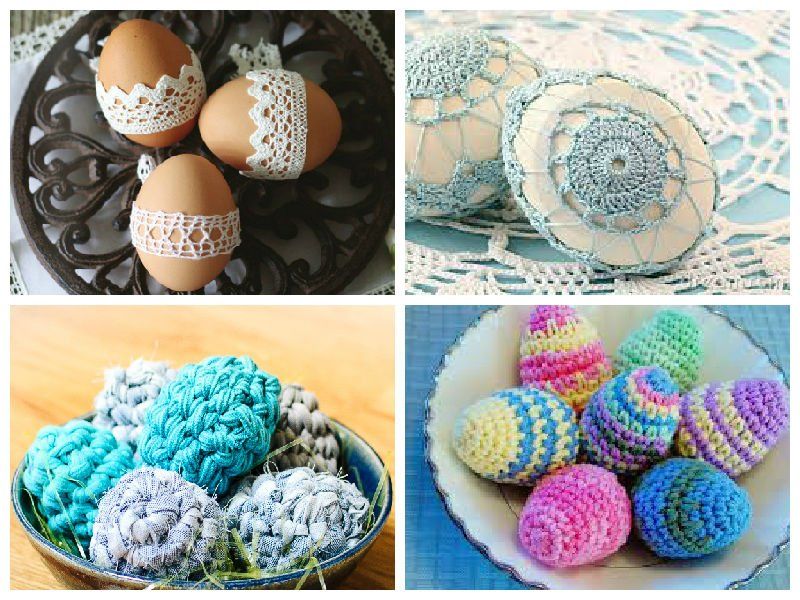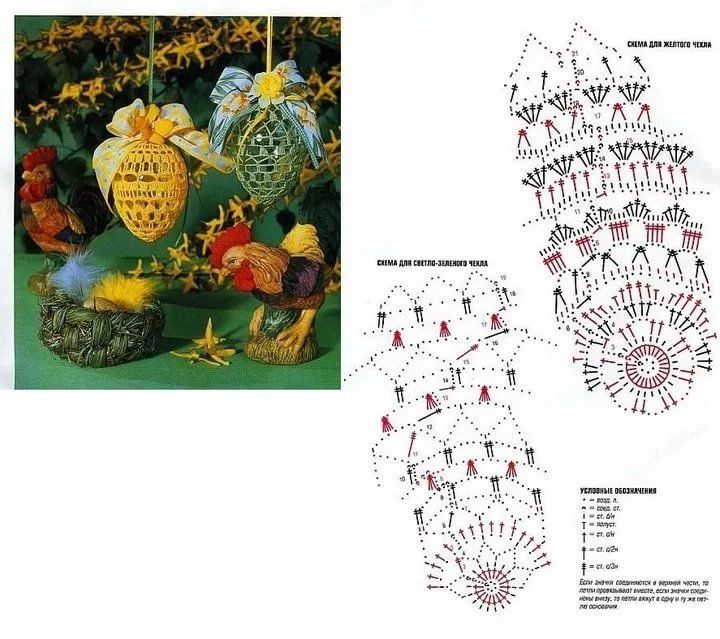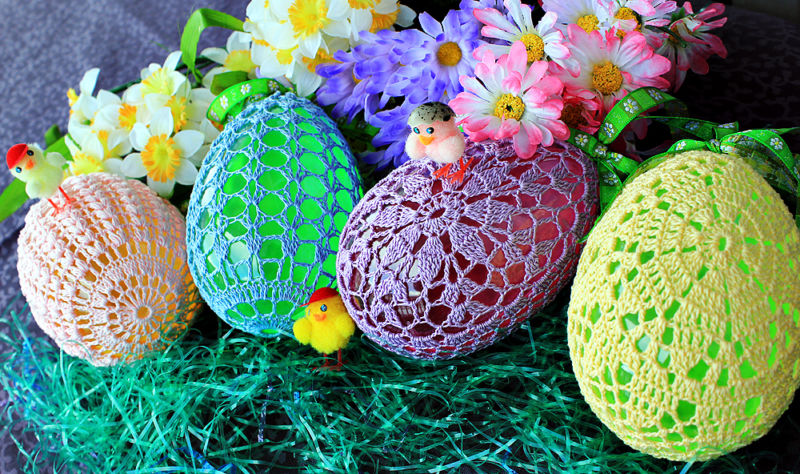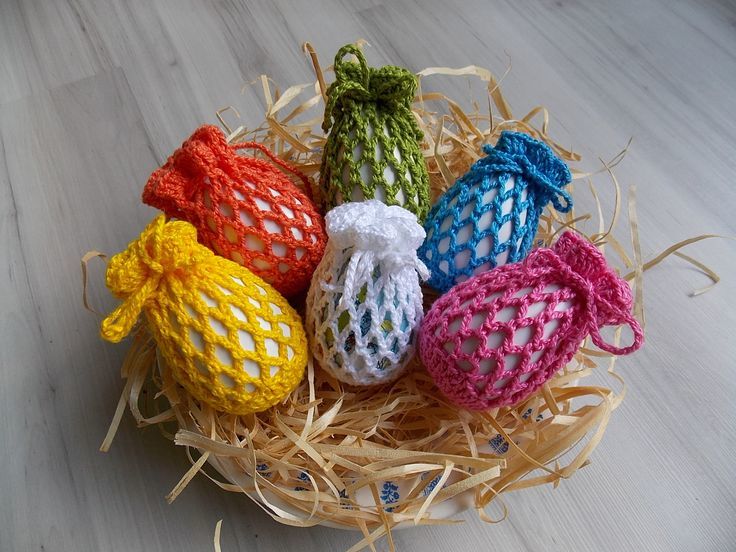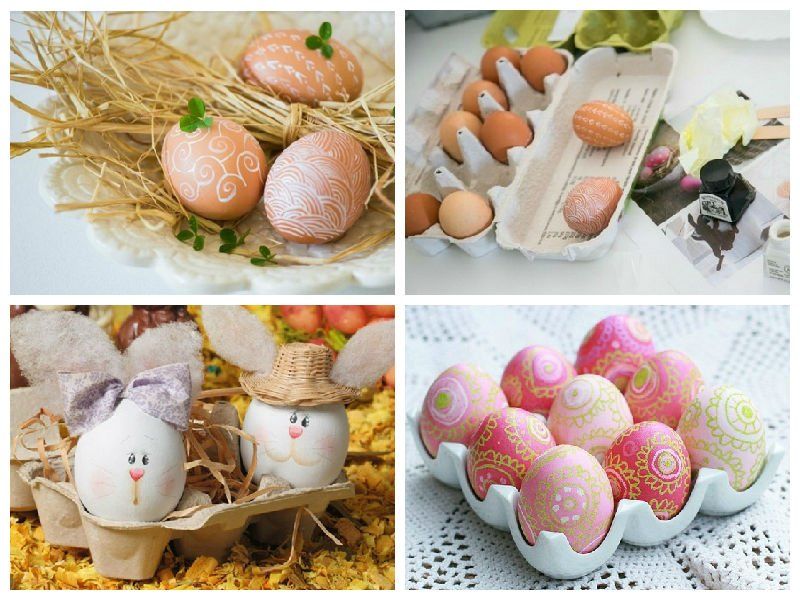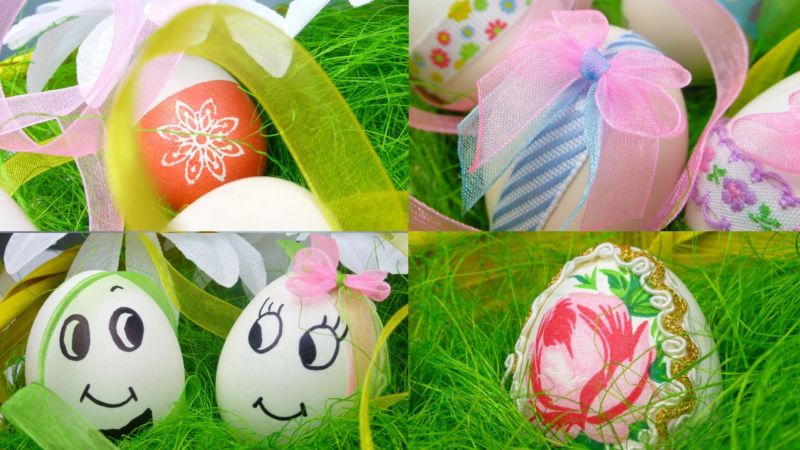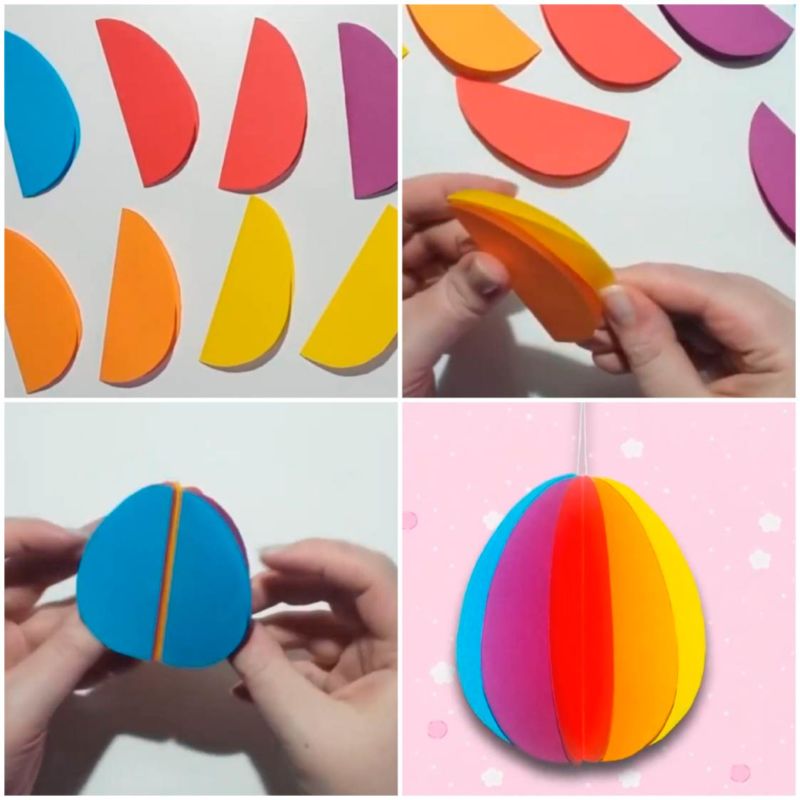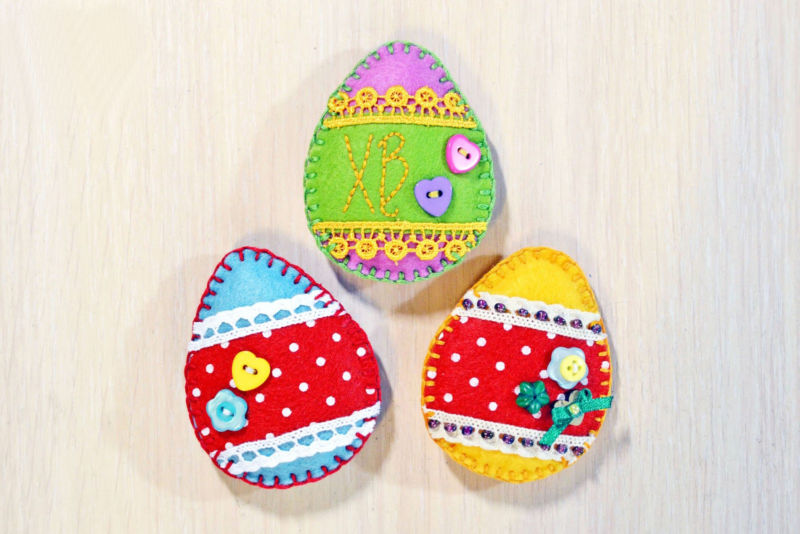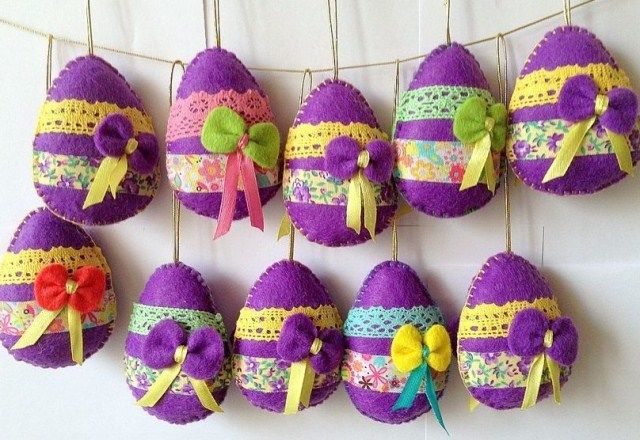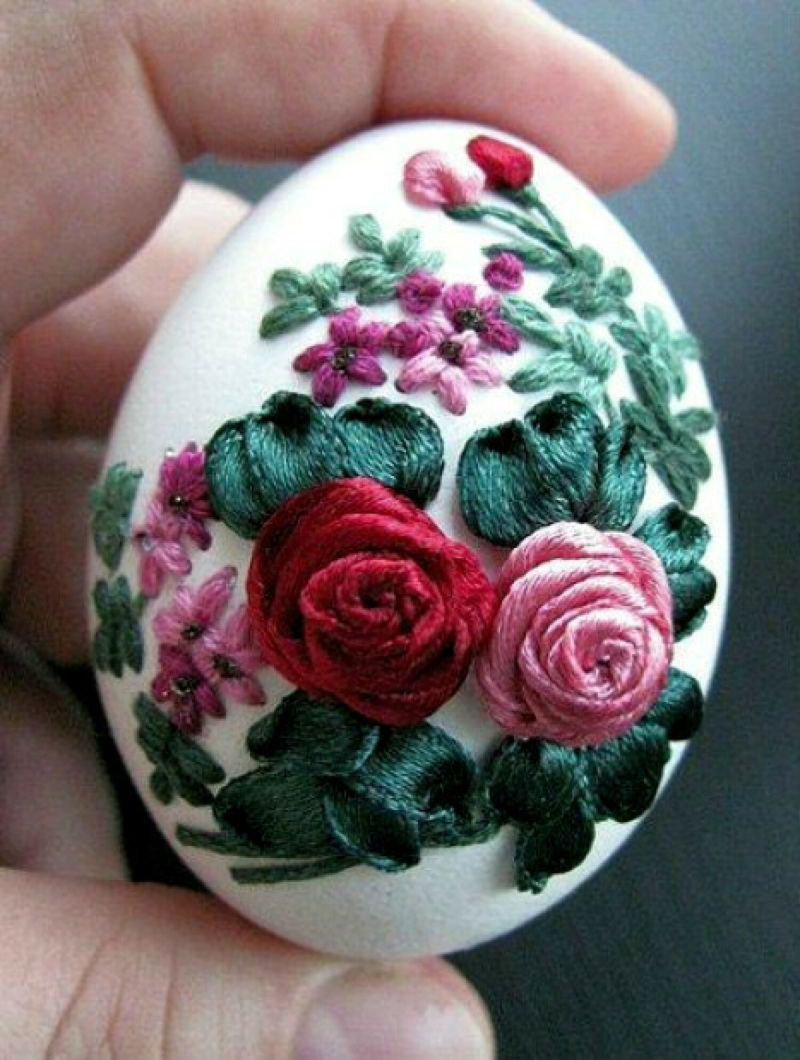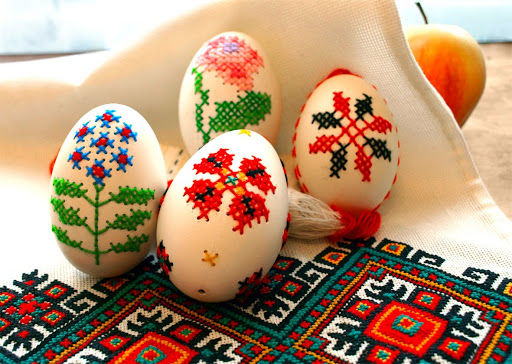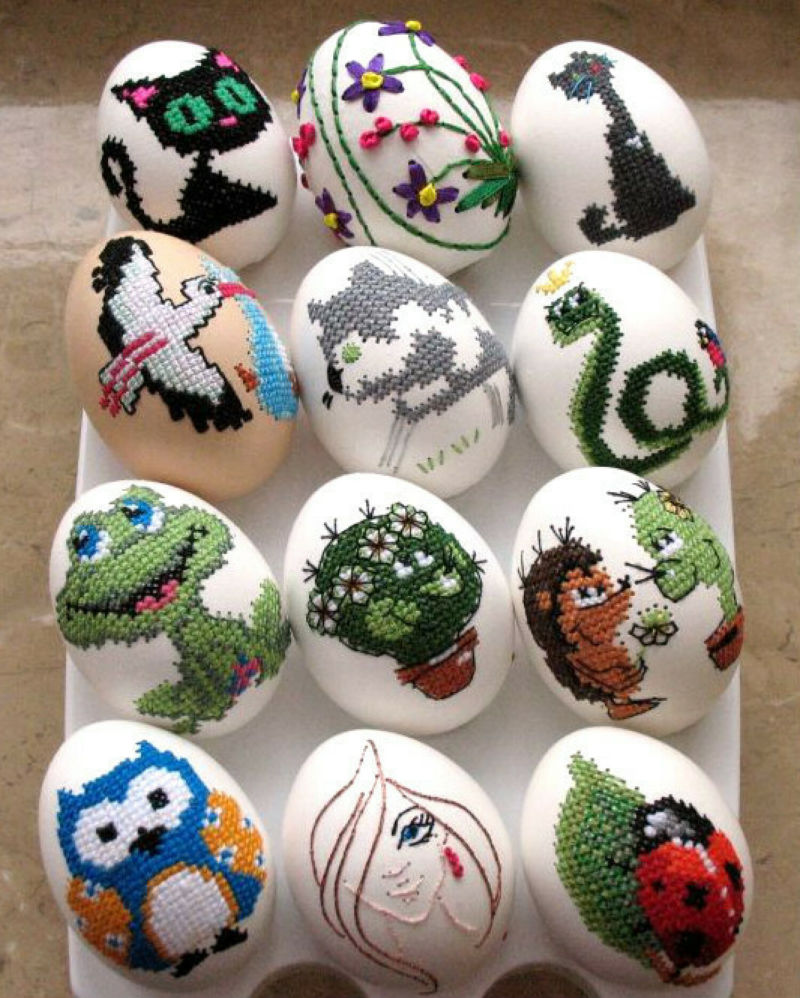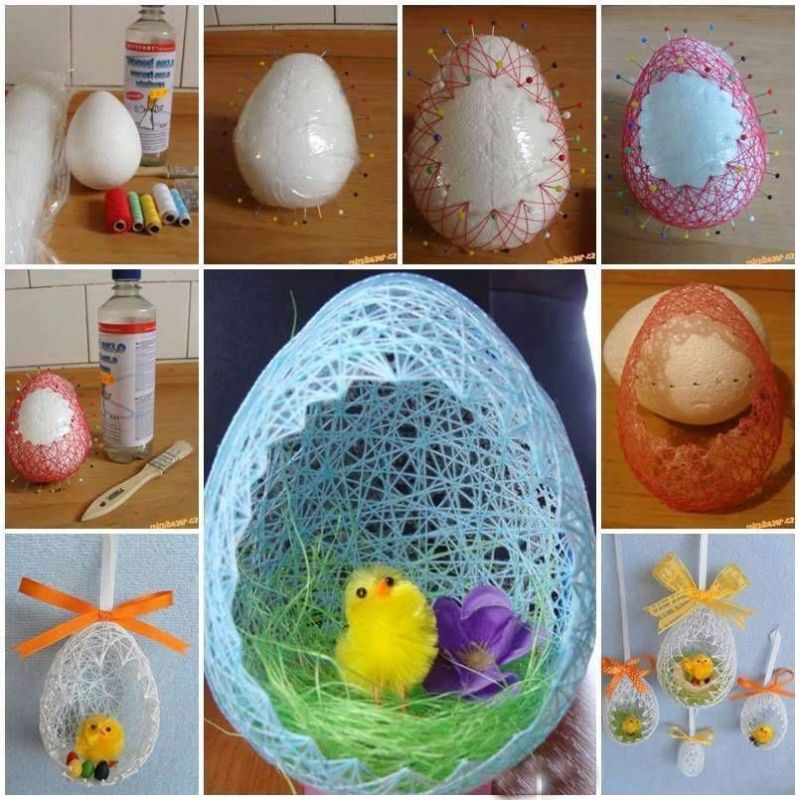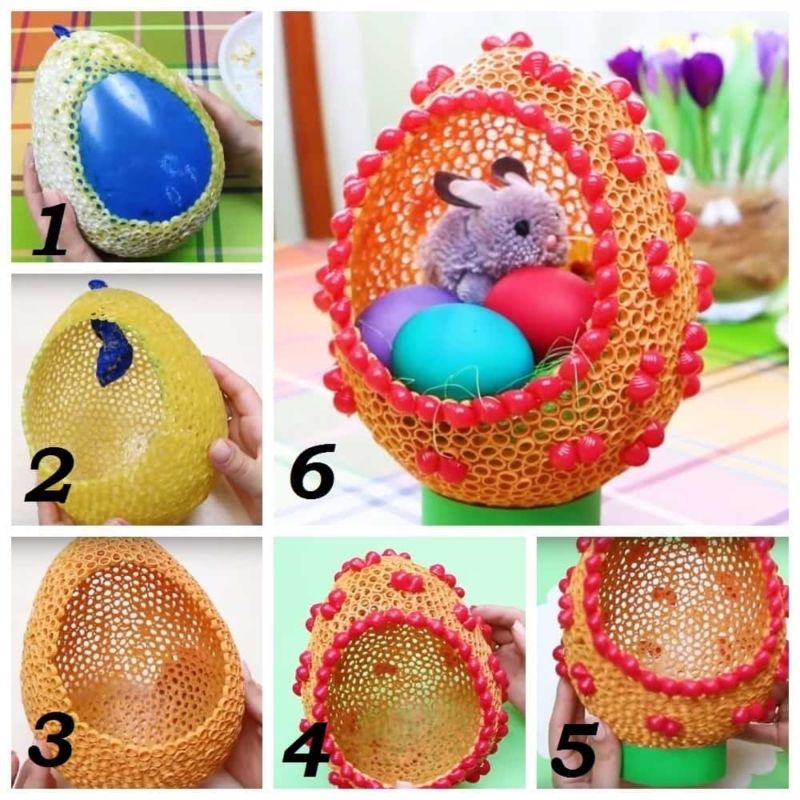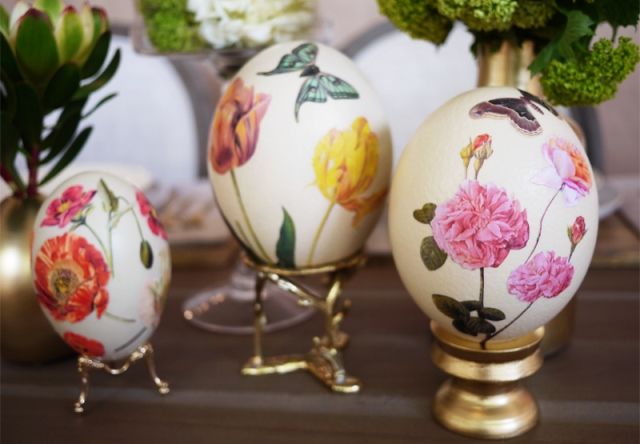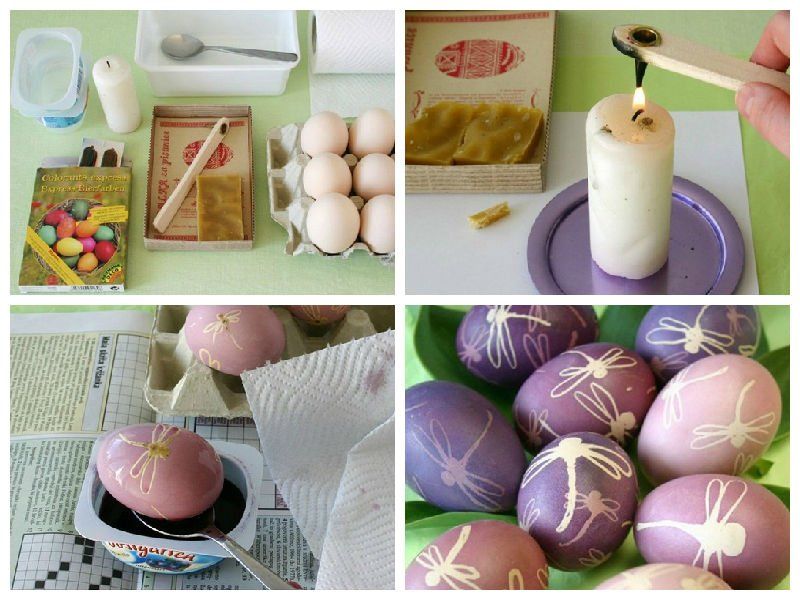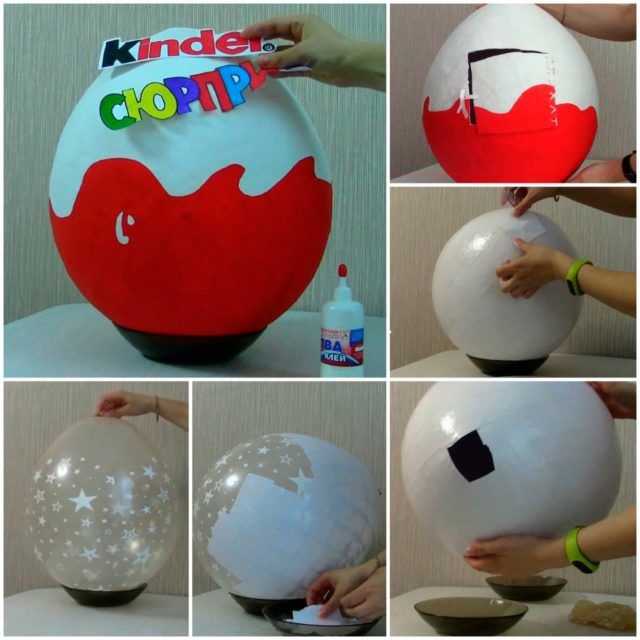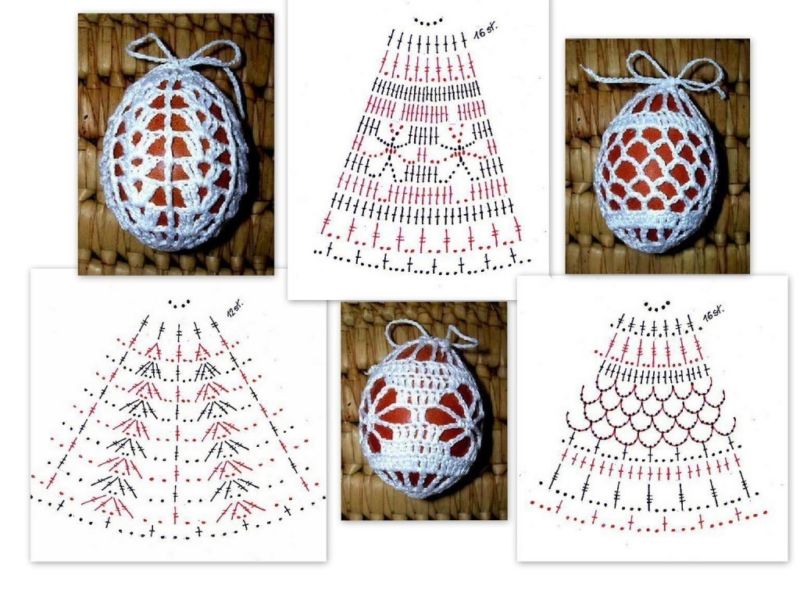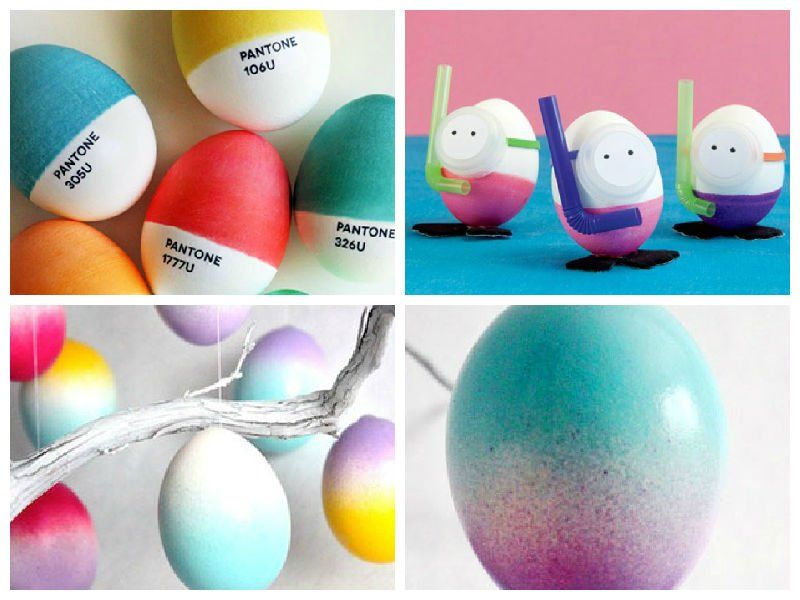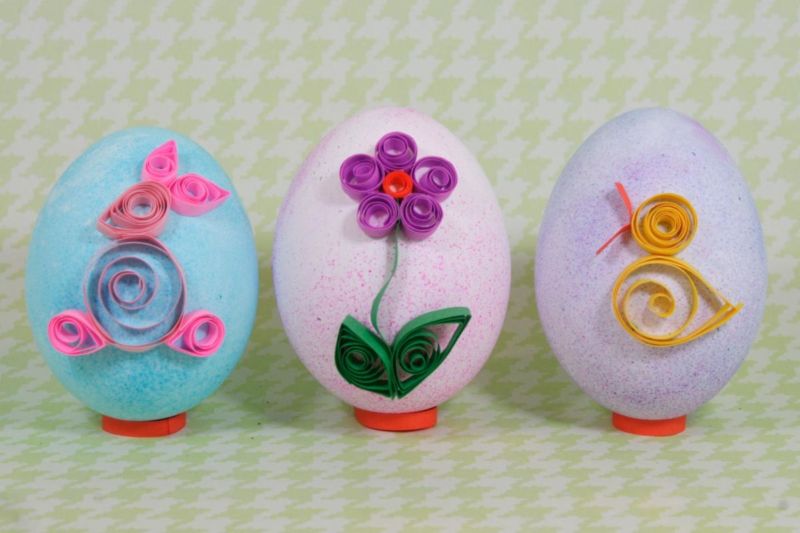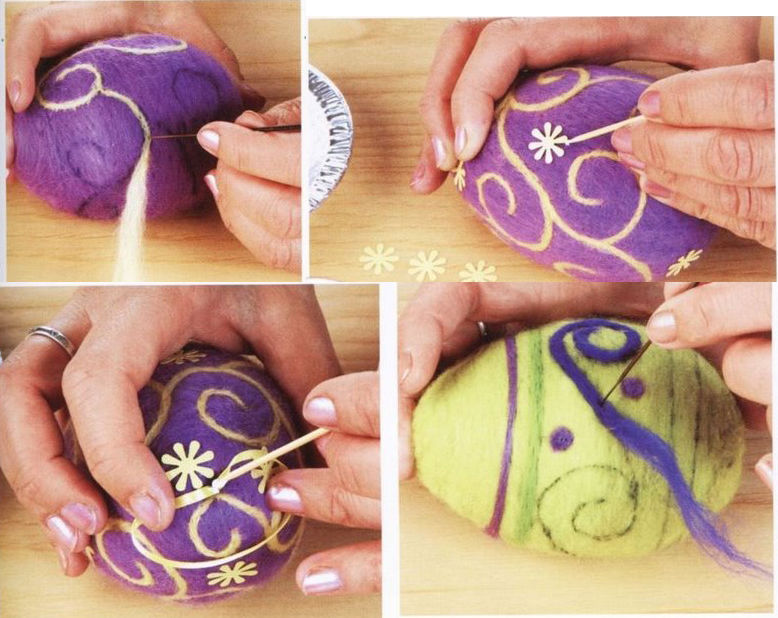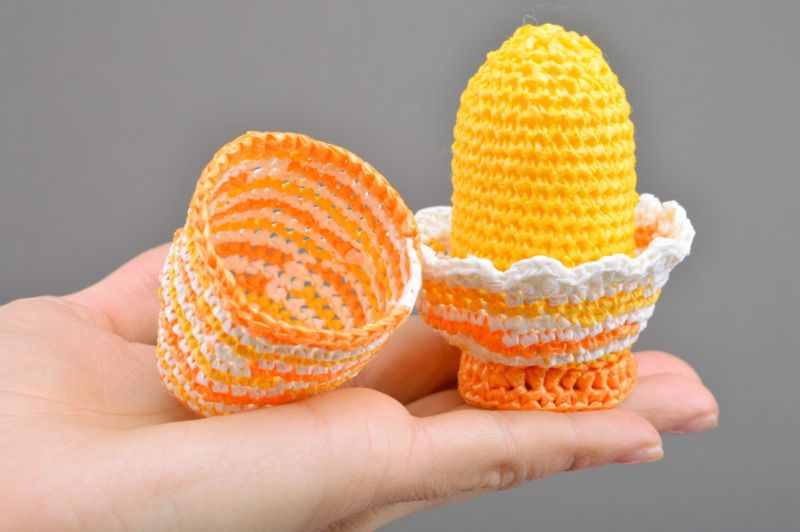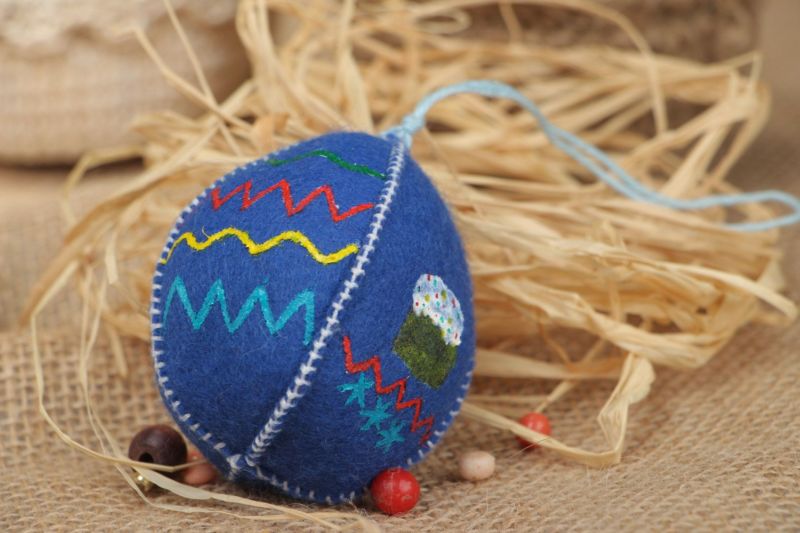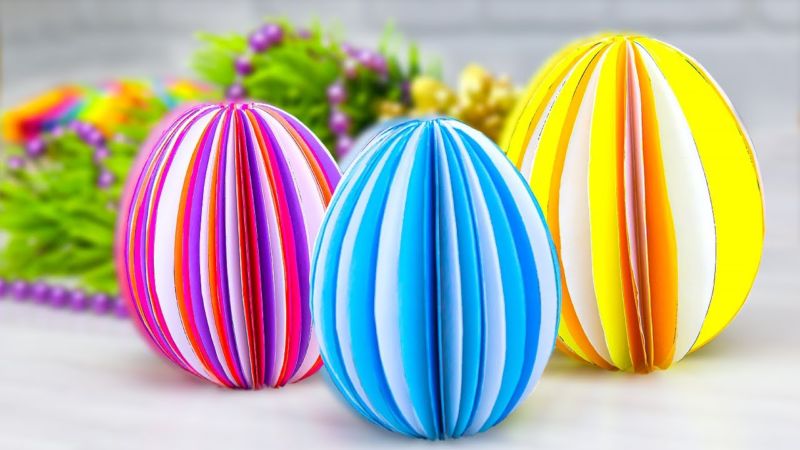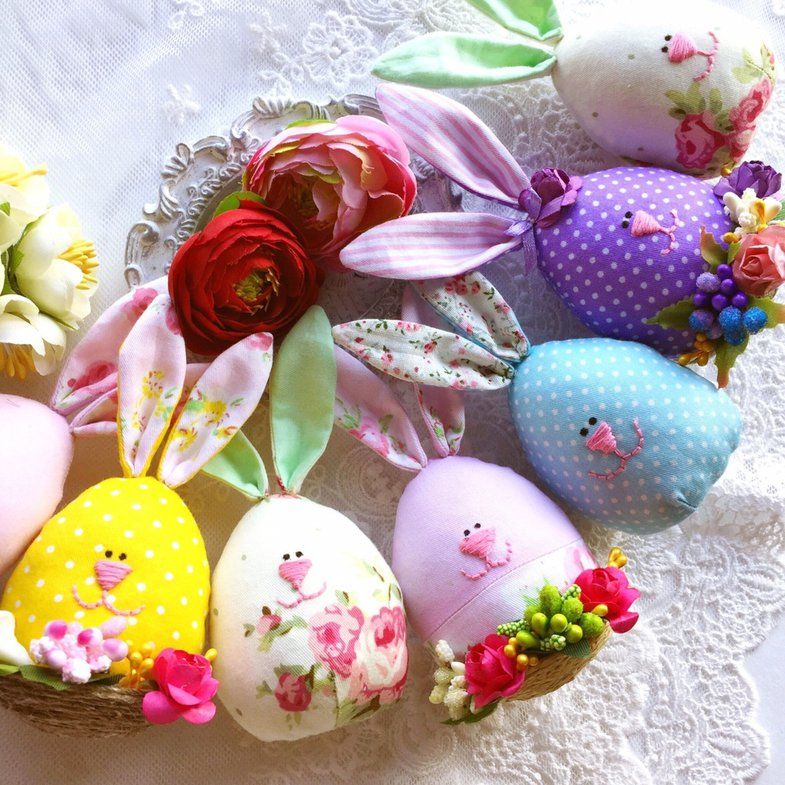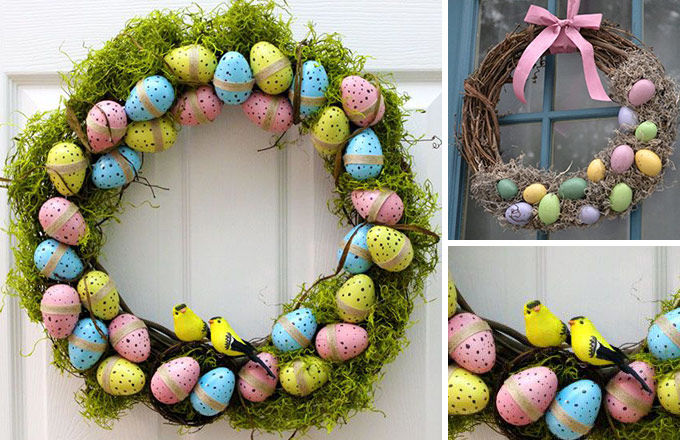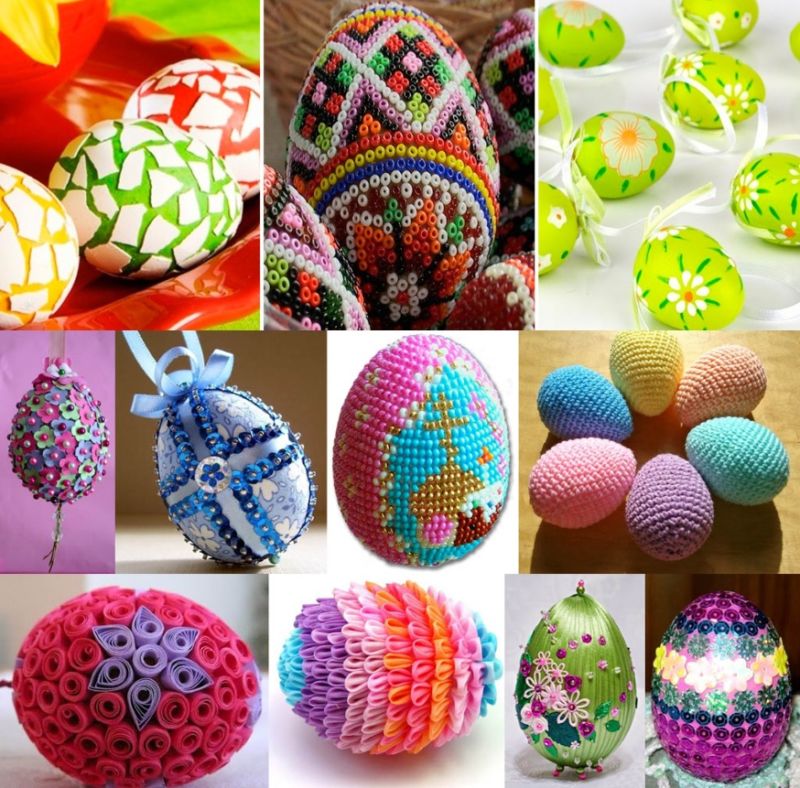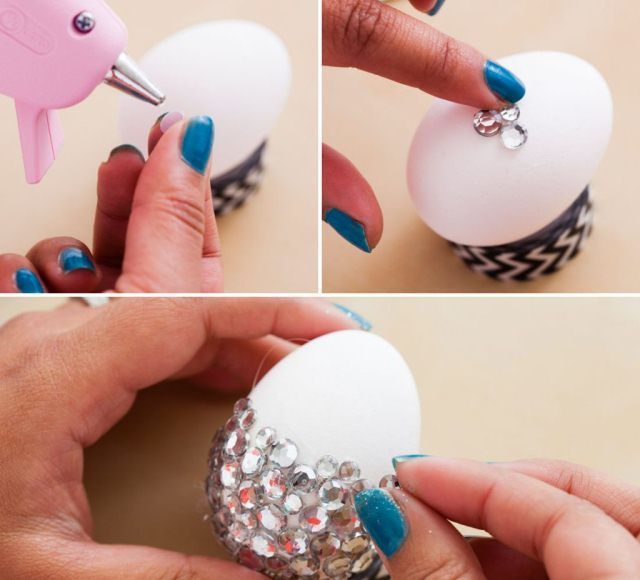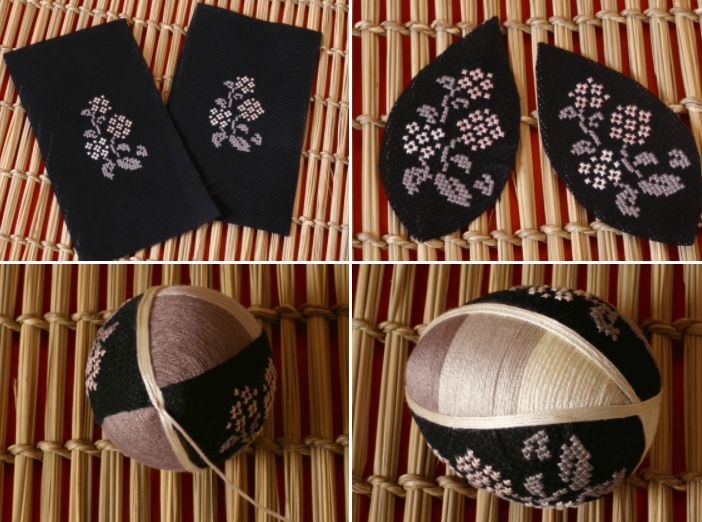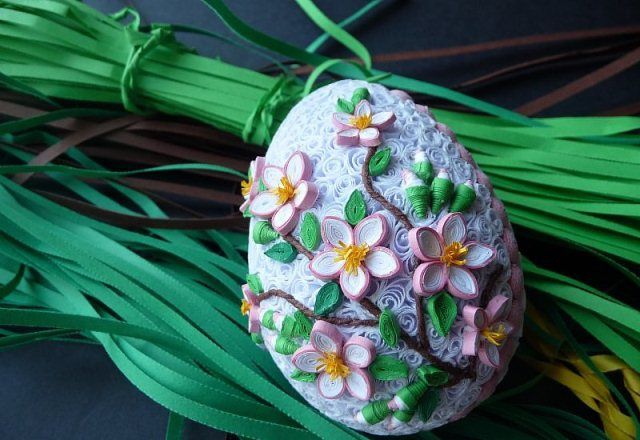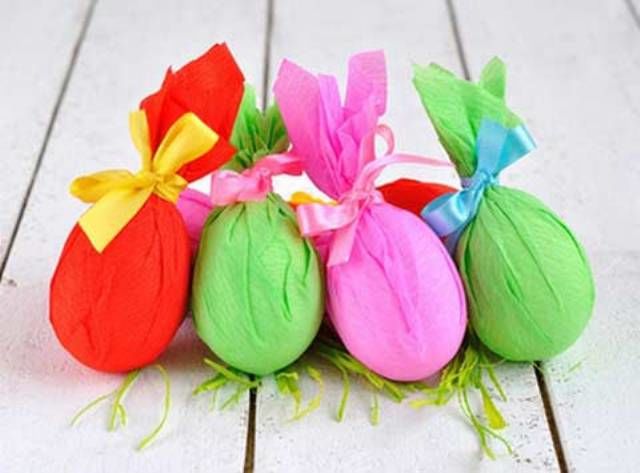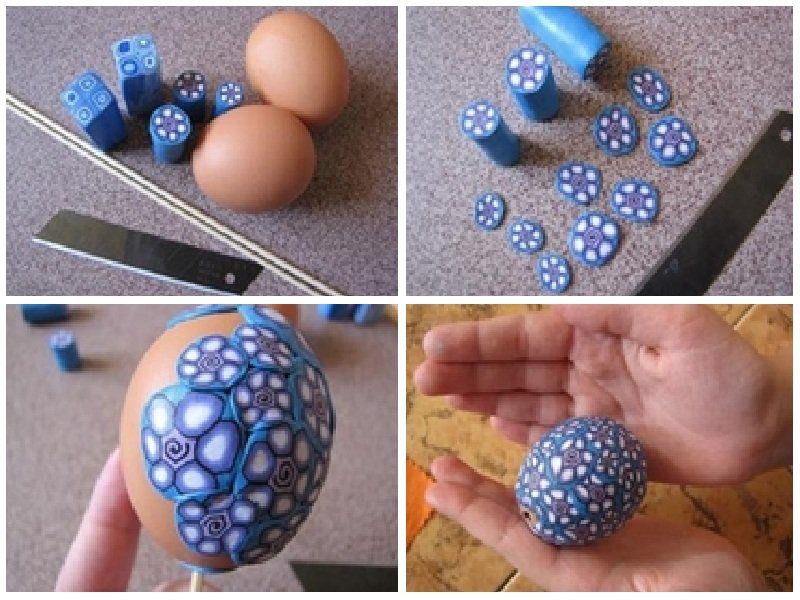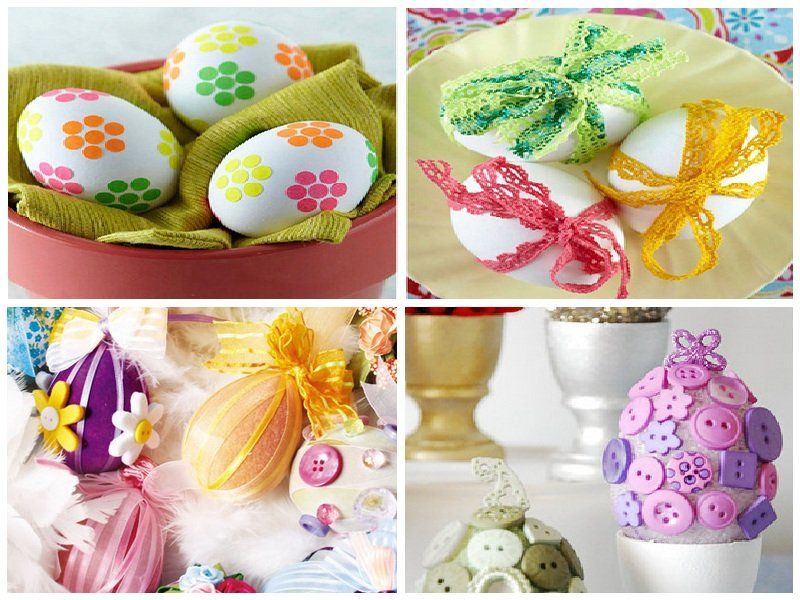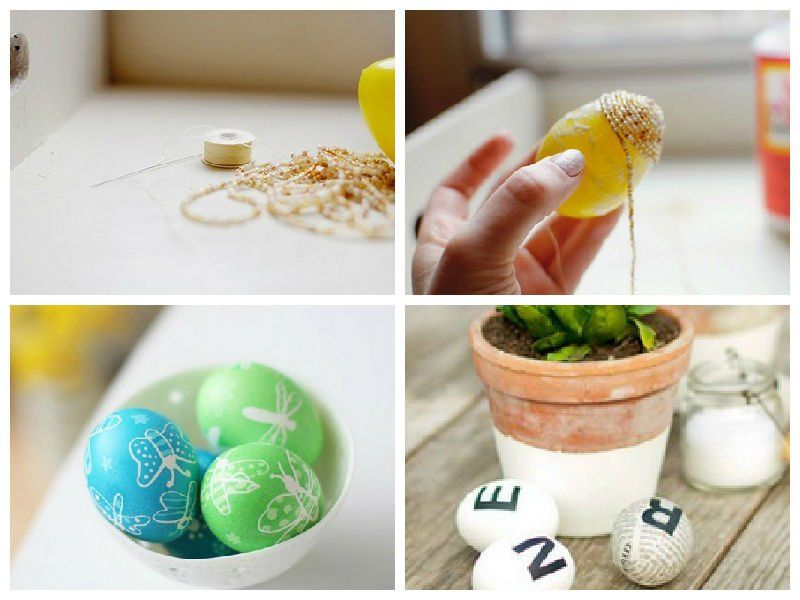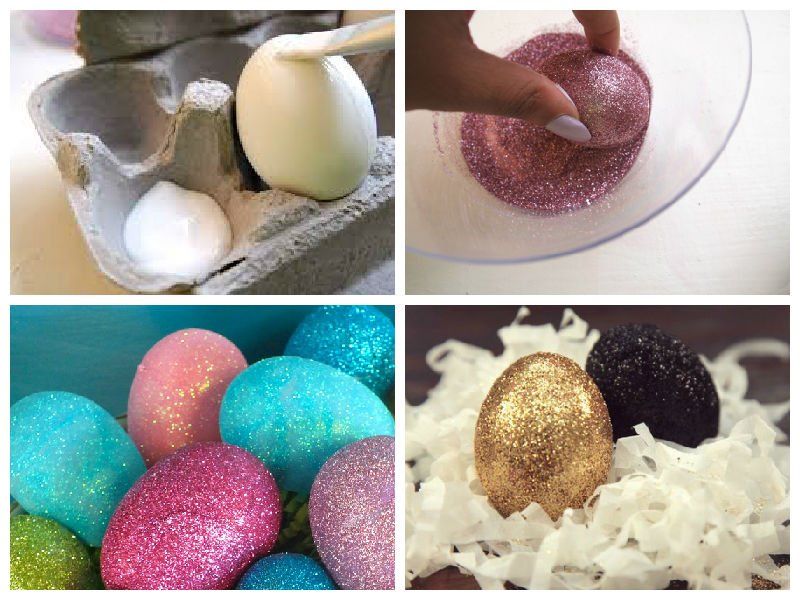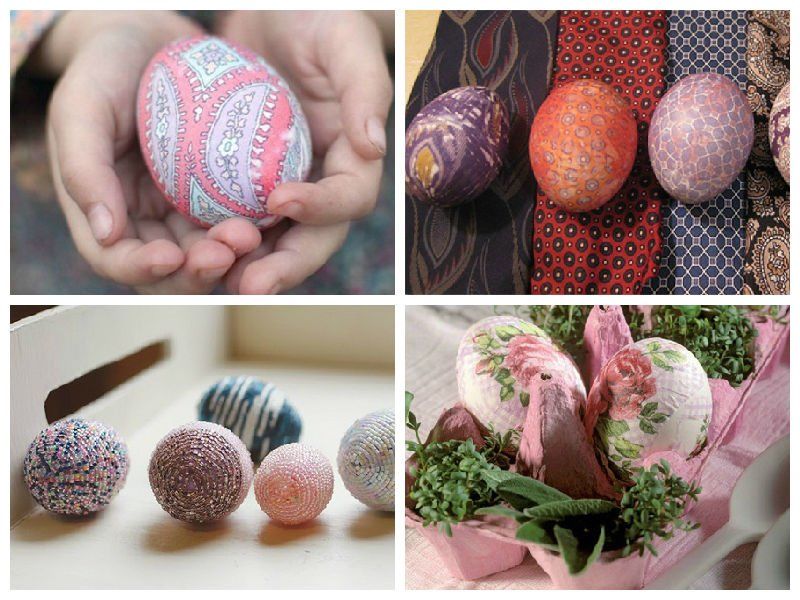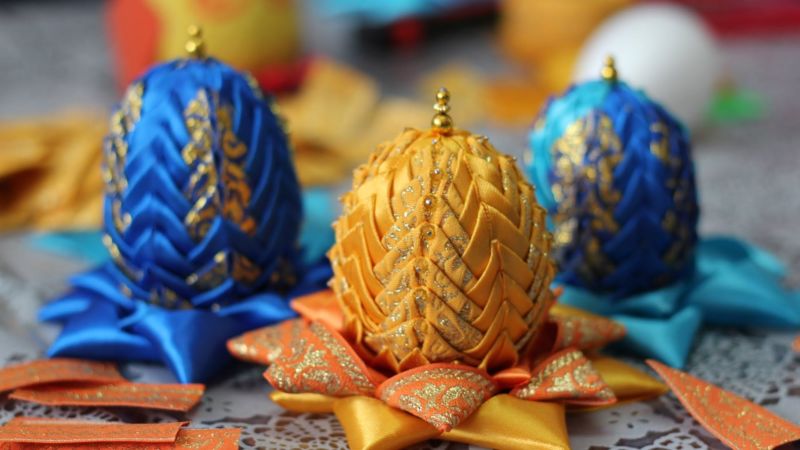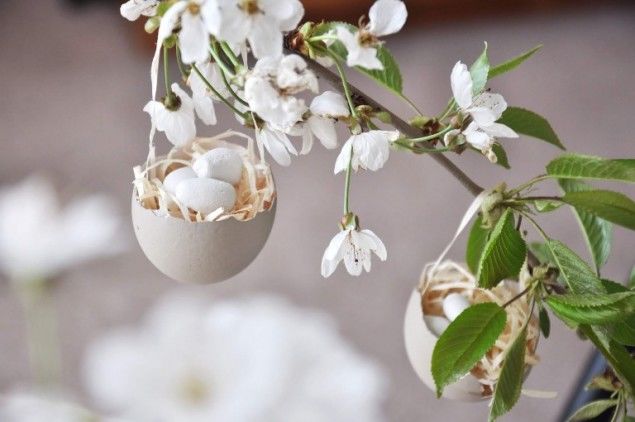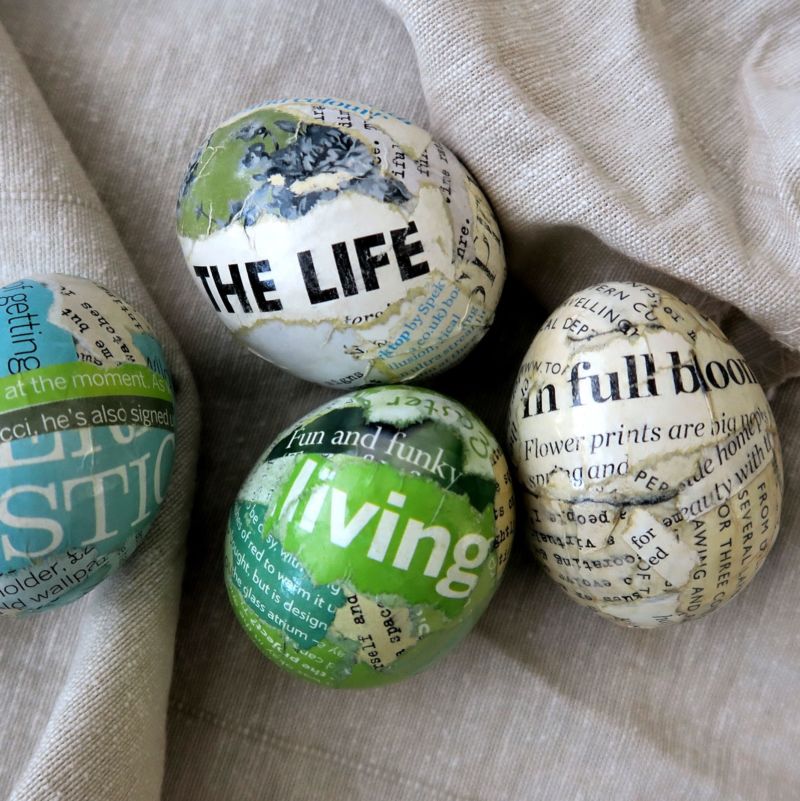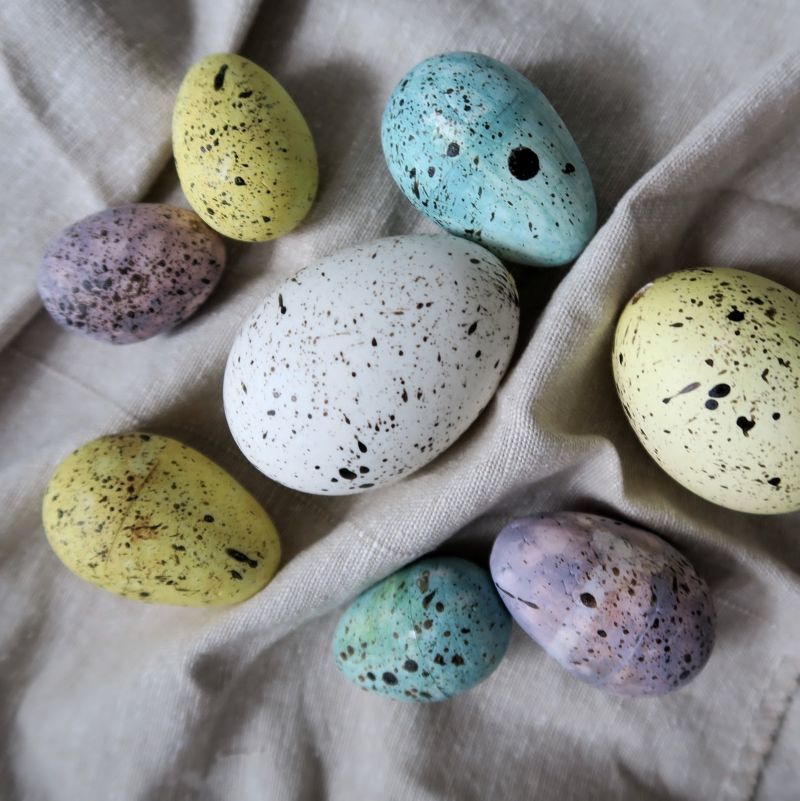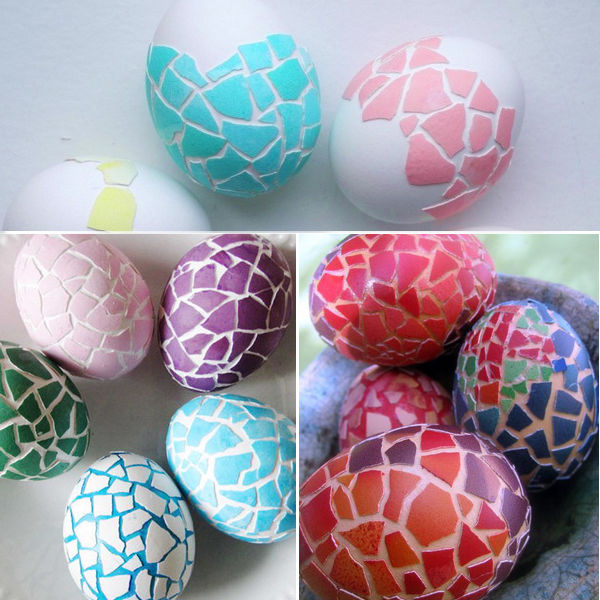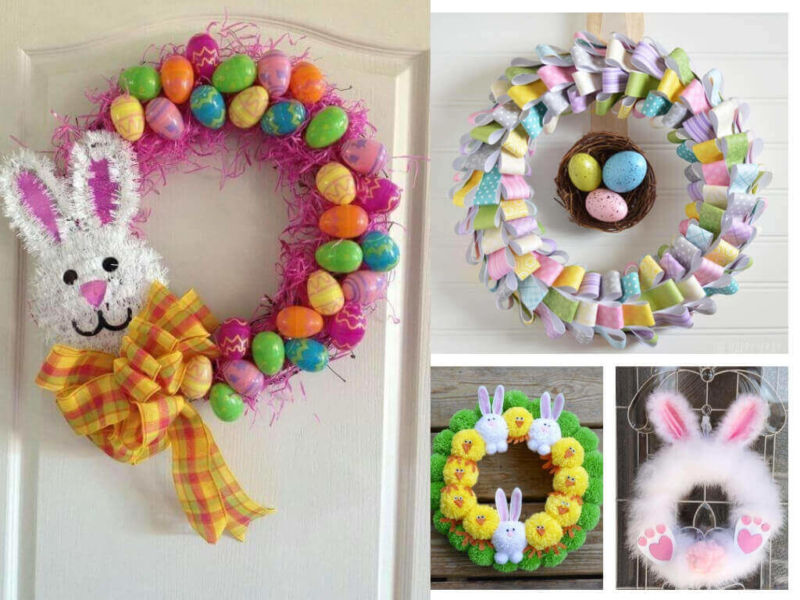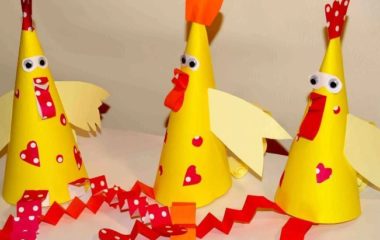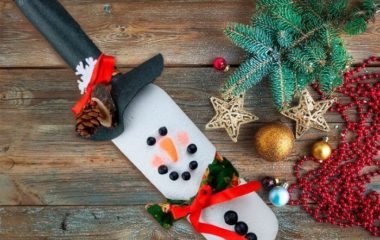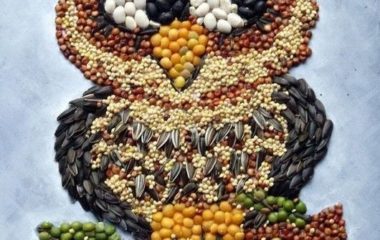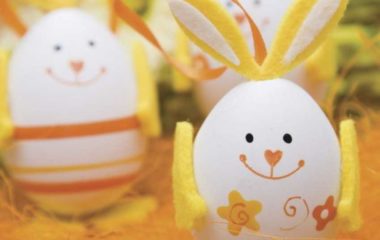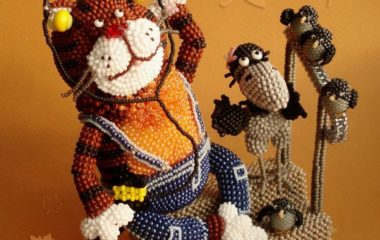Handmade Easter Egg: the best and original photo ideas for decoration
What is an Easter egg? It is a traditional symbol of Easter. For the holiday loved by many people create a variety of Easter eggs, including decorative ones.
Not everyone wants to use dyes when creating an Easter egg for their own reasons. Then a person often faces the question - how to make a craft Easter egg at home?
This article will describe in detail how to make decorative Easter eggs, decorating techniques, ideas for decorating such products. It is worth noting that such products are often made as a decoration, a gift.
Handmade Easter eggs will be a great decoration at home on the eve of the holiday.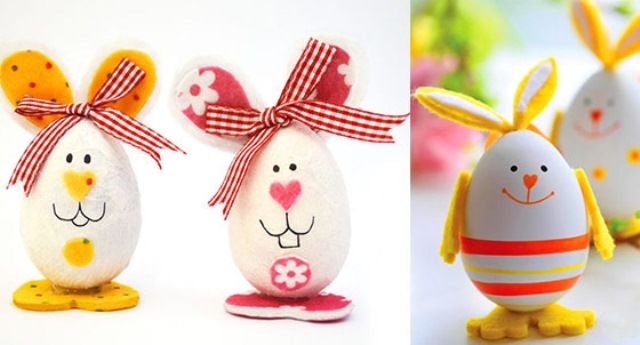
Decorating techniques
Before starting to make a decorative Easter egg, it is necessary to choose a decorating technique. There are five types: kanzashi, decoupage, kimekomi, kinusayga and quilling.
The entire result of the work depends on the decorating technique, you need to choose it thoroughly. All techniques are unique and require more detailed consideration and study.
Kanzashi
This technique is a handmade flowers, created from individual sewn modules. Such flowers do not wilt, they are easy to perform on their own.
Not without reason, Easter eggs for children are often decorated with kansashi, they attract their attention and awaken a desire to do needlework themselves.
There are many different flowers with which you can decorate eggs for Easter. Each flower is unique, you can learn by yourself, but the distinguishing feature of kanzashi is that for any flower you will need the same materials and tools:
- Satin ribbons of various sizes
- Pieces of fabric
- Thread
- Glue
- Scissors
- Beads, seed beads
- Scheme of folding petals (unique for each flower)
Decoupage
The technique is very popular with people engaged in creation of decorative Easter eggs, it is easy in performance, safe, it is possible to decorate any (white) eggs.
For decoupage you need paper towels with colorful images, a brush, any glue (egg white will do). After acquiring them, follow the instructions below:
- Separate the top layer of paper tissues
- Tear out the design, leaving an outline of 1 cm.
- Using a brush with glue, carefully smoothing the napkin from the middle to the edges, glue the picture on the egg.
- The result will be a very beautiful product for Easter.
Kimekomi
This type of creativity involves decorating Easter eggs with colorful pieces of fabric. Unlike the previous techniques for making a decorative Easter egg in the kimekomi style, foam blanks are used.
First it is necessary to make the desired pattern on the egg blanks with a pen. Then it is necessary to make incisions in these places with a knife, cut out scraps of fabric suitable for the pattern of Easter egg crafts, attach them to the surface of the workpiece and tuck into the incisions with a thin non-sharp object.
The seams should be decorated with lace, braid, glued on top, you can hide the ends by making a couple of bows.
The result - amazingly beautiful Easter eggs, made from just a few scraps of fabric.
Kinusaiga
This is the general name of the decorating technique. It includes other narrowly focused techniques, including kimekomi.
Kinusaiga is performed in the same way as the aforementioned technique. The only difference lies in the fact that kimekomi is a specific form of technique (spherical objects), and in kinusaiga you can perform wreaths, paintings, others.
A parallel can be drawn here with origami (paper folding technique) and kusudama (a ball made of paper).
Quilling .
Quite often this technique is called in another way - papermaking. The essence of quilling - the composition of various compositions of twisted strips of paper. To do this, you need the basis of products: the usual eggshells, foam plastic blanks, special paper.
Among the tools one will need glue, a toothpick to wind the paper strips on.
First, it is necessary to wind a strip of paper on a toothpick. The resulting "roll" is then somewhat loosened, squeezed on one side to obtain a "droplet".
This is how the main elements of the handicraft are made, subsequently attached to the surface of the base in order to create different compositions. Such an egg, fully lined with "rolls" and "droplets" will be a great decoration of the house at Easter.
Ideas for decorating Easter eggs
Decorating techniques play an important role in creating a decorative Easter egg, but are they the only way to decorate a craft? In search of an answer to this question, people engaged in needlework are finding more and more new ways to decorate Easter eggs.
There are a huge number of them, but all these decorating ideas can be classified and divided into groups. All such "classes" can be divided into about 4.
Decorations from satin ribbons
Very often used together with the technique of decor kansashi. First, a sticky substance is applied to the egg, and then, sliding slightly apart, they wind satin ribbons on it.
At the bottom of the handicraft ribbons are crossed, at the end of the work it is necessary to sew them on top with stitches and tie them into a beautiful bow. You can also additionally decorate the ribbons with beads.
Yarn
A very interesting way to decorate eggs. To implement it, you will need the yarn itself and glue. First, the tip of the yarn is glued to the top of the egg. Then the handicraft is gradually completely wrapped with yarn, fixing the thread with glue. That is all.
Such an egg is very easy to make and looks beautiful at the same time. For craftsmen we can also recommend decorating the egg over the yarn with different embroideries. So it will be even more cute.
Beads
Quite a complicated technique of decorating an egg. There are two ways: braiding eggs with beaded belts and gluing threads with beads on them to the work.
The first option, though loved by many craftsmen, but difficult to perform (also because of the sheer number of different techniques of weaving), so let us dwell on the second. Using a needle, you need to thread the beads, and then, using transparent glue, gently glue it to the egg or workpiece.
In this situation, you can both wrap the beads around the craft or pull it and wind it around the egg, rotating it.
For convenience, at the end of the work the handicraft should be turned over (not pasted up), so the not yet glued thread will lie evenly on the surface of the product, it will be more comfortable to attach it to the egg.
Crochet Decoration
The most complex way to decorate eggs for Easter. To implement it, you will need not only the necessary materials, but also serious crochet skills.
Decorative eggs can be made entirely of yarn (amigurumi technique), and dressed in a variety of lace "outfits" (openwork Easter eggs).
There are a huge number of schemes of crochet Easter eggs, the details of which you can familiarize yourself with. Also, the crafts can be crocheted not only with yarn, but also with beads.
In addition, craftsmen often recommend tying a small basket to decorative Easter eggs. This way the craft will look prettier and more interesting.
Making Easter eggs
When you have chosen a technique for decorating and/or decorating Easter eggs it is time to think about the material from which the future craft will be made, because many people prefer the usual painting of Easter eggs more complicated products.
There are few methods for making such crafts, however, they are all fundamentally different from each other.
With paper
Very simple and quite beautiful at the same time. First, you need to draw Easter eggs on a sheet of paper, namely their outlines.
These are blanks, which then need to be carefully cut out with scissors, bend in half along the oval of the egg and glue together in the folds.
Connect the parts until they form a single, even piece, which can also be decorated with a bow to hide the seams.
Made of felt
Often made for various children's competitions. It is necessary to cut two ovals out of felt, and then sew them along the edge with thick thread, but not all the way.
The first oval should remain untouched, and the second should be cut, thus creating a small pocket where you can put anything, such as other smaller crafts.
An embroidered three-dimensional egg
A method often used in conjunction with kansashi. To do it, you need, as in the case of the Easter egg decoration with beads, to cover the creation with thread. It is only necessary to stick a pair of toothpicks on top and bottom of the egg and wind the thread, going from one point to another.
Thanks to such a technique, the circles of thread will lie more evenly on the surface of the handicraft. After that, you need to fix the ends of the thread, carefully remove the toothpicks from the egg.
At the end of the work, you can further decorate the piece with paper florets or anything else you think will give the creation the best look.
Hollow egg from thread
Similar to the above method of making a decorative Easter egg. To make such a handicraft, in addition to the usual tools for needlework, you need a balloon on which the thread will be attached.
- First you need to give the ball an egg shape. To do this, you should not inflate it too tightly and, using your hands, pull it a little.
- After that, you just need to wrap the thread wetted with glue on the balloon, wait until the product dries and in any convenient way remove the balloon from the handicraft (you can burst it, but there is a risk of damaging the product).
The peculiarity of this method is that it gives people the opportunity to create in this way, not only decorative Easter eggs, but many other interesting and beautiful products and compositions.
Easter eggs have long been not only a symbol of the great and bright holiday. Every year a lot of people discover this field of needlework.
They study the history of the holiday and the custom of making products from eggs, they discover more and more new kinds of different crafts, improve their skills and in the end get a unique experience and pleasure from the work done.
This article has touched upon many aspects of making decorative Easter eggs only briefly, but even that is enough for someone who has read it to become interested in the subject or, perhaps, even to find a new hobby of their own.
It would be great if anyone could find in this article interesting new ideas for future crafts. In any case, decorative Easter eggs are something new.
It is for this reason that people will never stop looking for new ways to decorate their crafts, because the ability to create is inherent in us from birth.

